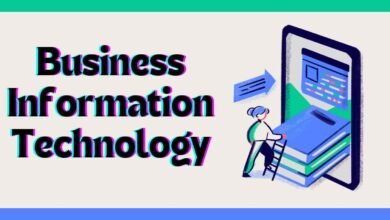
Best headless e-commerce technology landscape is evolving rapidly, with businesses seeking more flexibility and efficiency in their online stores. Traditional e-commerce systems are increasingly giving way to headless commerce solutions. This article will delve into what makes headless e-commerce technology a game-changer, exploring its benefits, key frameworks, and why it’s becoming the go-to choice for modern businesses.
What is Headless E-commerce Technology?
Headless e-commerce refers to a system where the front-end (the user interface) and back-end (the database and server-side logic) are separated. Unlike traditional e-commerce platforms, which come as a monolithic solution .
Understanding Headless CMS for E-commerce
A Headless Content Management System (CMS) is an integral part of headless e-commerce. Unlike traditional CMSs, which manage both the content and its presentation, a headless CMS focuses solely on content management. This separation allows for greater flexibility in how content is delivered and displayed across different channels and devices.
Benefits of Headless CMS for E-commerce
Flexibility
Developers can use various front-end technologies while maintaining a single back-end system.
Scalability: Best Headless E-commerce Technology
Businesses can scale the front-end and back-end independently. Omni-channel delivery content can be easily repurposed for websites, mobile apps, and other platforms.
API-Driven E-commerce Platforms
API-driven e-commerce platforms are a core component of headless commerce. APIs (Application Programming Interfaces) facilitate communication between different software applications, allowing for more dynamic and flexible interactions.
Advantages of API-Driven E-commerce Platforms
Integration APIs enable seamless integration with third-party services and tools. Customization businesses can tailor their e-commerce experience to meet specific needs. Speed apis facilitate faster development and deployment of new features.
Decoupled E-commerce Architecture: Best Headless E-commerce Technology
Decoupled e-commerce architecture is another term often used interchangeably with headless commerce. In this architecture, the front-end and back-end are distinct entities that communicate through APIs.
Must Visit: Flex Flows
Choose Decoupled E-commerce Architecture?
Enhanced Performance
Separation of concerns leads to better performance and faster load times.
Improved Security: Best Headless E-commerce Technology
The decoupling can provide an additional layer of security, protecting sensitive data.
Ease of Updates
Changes to one part of the system don’t necessarily affect the other, making updates more manageable.
Headless Commerce Solutions

Several headless commerce solutions are leading the charge in this space, each offering unique features and benefits. Here are some of the best headless e-commerce frameworks to consider:
Shopify Plus
Shopify Plus offers a robust headless commerce solution that integrates with a wide range of third-party tools and services. Its API-driven approach provides flexibility and scalability for large businesses.
Magento Commerce (Adobe Commerce)
Magento Commerce is known for its powerful and customizable headless e-commerce capabilities. It offers a rich set of features and a large ecosystem of extensions, making it suitable for complex e-commerce operations.
BigCommerce
BigCommerce provides a flexible headless e-commerce platform with built-in APIs that support extensive customization. Its focus on scalability and performance makes it a popular choice for growing businesses.
CommerceTools
CommerceTools is a cloud-native headless commerce platform that offers a comprehensive API-first approach. Its microservices architecture supports rapid development and deployment of new features.
Elastic Path
Elastic Path offers a headless commerce solution designed for enterprises needing complex and scalable e-commerce operations. Its API-driven architecture ensures high flexibility and integration capabilities.
Choosing Framework for Your Business
When selecting a headless e-commerce framework, consider the following factors:
Integration Capabilities
Look for a solution that easily integrates with your existing tools and services.
Cos:
Evaluate the total cost of ownership, including licensing, development, and maintenance.
Headless E-commerce: Best Practices
Define Your Goals
Before transitioning to a headless e-commerce solution, clearly define your business objectives and what you hope to achieve. This will guide your choice of technology and implementation strategy.
Choose the Right Technology Stack
Select a technology stack that aligns with your business needs and technical capabilities. Consider factors like ease of integration, support, and community.
Focus on User Experience
Even though headless e-commerce separates the front-end from the back-end, user experience should remain a top priority. Ensure that the front-end delivers a seamless and engaging shopping experience.
Plan for Integration
A successful headless e-commerce implementation involves integrating various systems and services. Plan and test these integrations thoroughly to ensure smooth operations.
Monitor and Optimize
After implementation, continuously monitor performance and user feedback. Utilize this information to make fundamental changes and advancements.
The Future of Headless E-commerce

As technology continues to advance, headless e-commerce is likely to become even more prevalent. The demand for personalized, flexible, and scalable online shopping experiences will drive further innovation in this space. Businesses that adopt headless commerce solutions will be well-positioned to meet the evolving needs of their customers and stay ahead of the competition.
Conclusion
Headless e-commerce technology offers a revolutionary approach to online retail, providing businesses with unparalleled flexibility, scalability, and performance. By decoupling the front-end and back-end, companies can create more dynamic and personalized shopping experiences while optimizing their operations. With a variety of headless commerce solutions available, choosing the right framework and implementing best practices will be crucial to harnessing the full potential of this technology. Headless e-commerce technology is reshaping the online retail landscape by offering unparalleled flexibility, scalability, and performance. By decoupling the front-end and back-end, businesses can deliver more personalized and engaging experiences while optimizing their operations. As the industry continues to evolve, adopting headless solutions will be key to staying competitive and meeting the demands of modern consumers.
FAQs
What is the primary benefit of headless e-commerce?
The primary benefit is the flexibility and scalability it offers, allowing businesses to customize their front-end and back-end independently.
How does a headless CMS vary from a conventional CMS?
A headless CMS focuses solely on content management, while a traditional CMS manages both content and its presentation.
What are some popular headless e-commerce frameworks?
Popular frameworks include Shopify Plus, Magento Commerce, BigCommerce, Commerce Tools, and Elastic Path.
Can headless e-commerce be integrated with existing systems?
Yes, headless e-commerce solutions are designed to integrate with various third-party services and tools through APIs.
Is headless e-commerce suitable for small businesses?
While headless e-commerce is often favored by larger enterprises, it can also benefit small businesses seeking more flexibility and scalability as they grow.
Read More: Instagram Meta Business Suite




